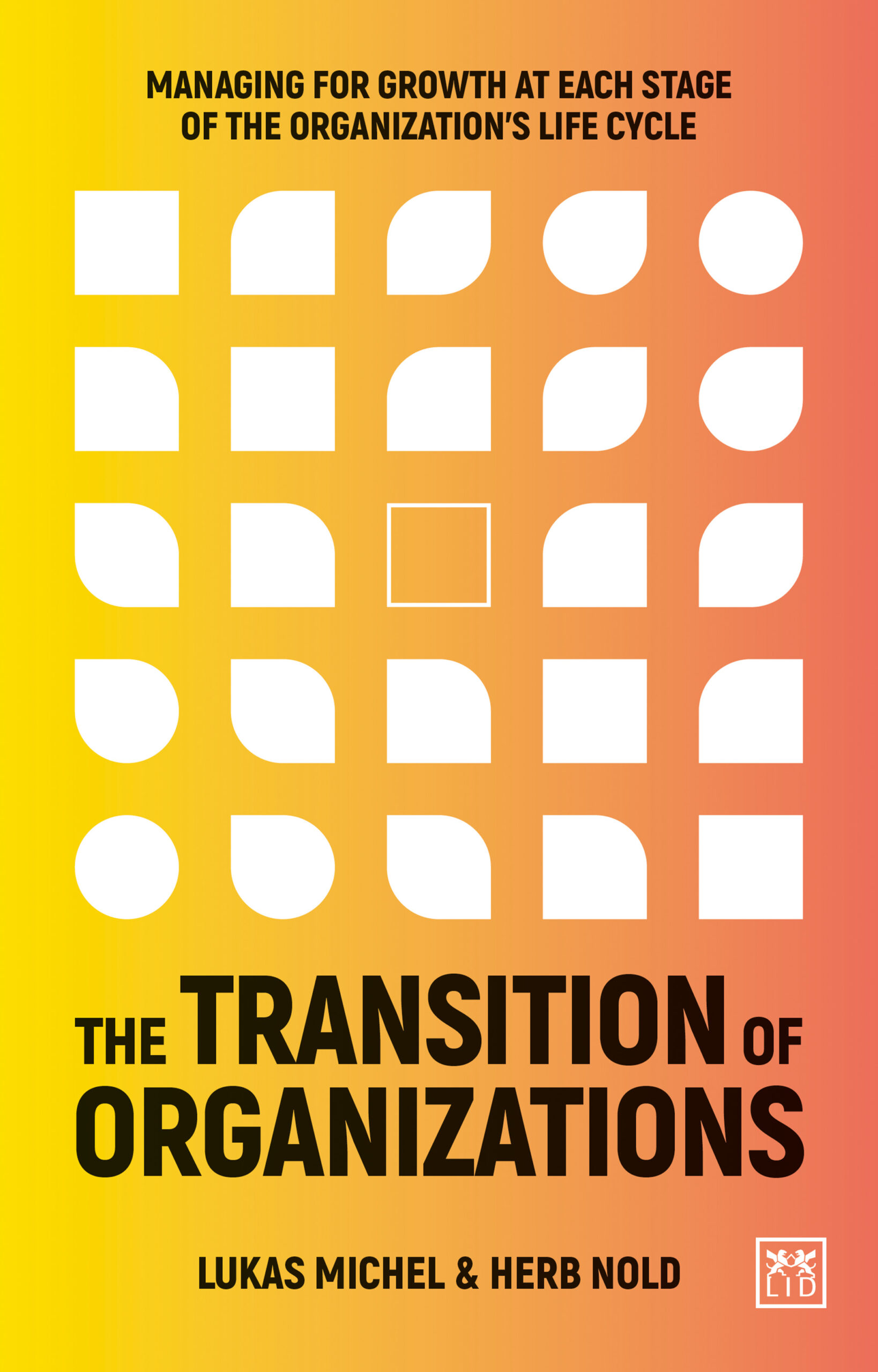|
Four Strategies to Beat the Growth Pains of Organizations with Lukas Michel & Herb Nold
FOUR STRATEGIES TO BEAT THE GROWTH PAINS OF ORGANIZATIONS

By Guest Contributors Lukas Michel & Herb Nold
Authors of The Transition of Organizations, Lukas Michel and Herb Nold, share the four transition strategies to advance down the business path to growth.
You are working harder than ever but growth has stalled and profitability has dropped. You notice that your leadership is less effective, your culture signals infections, and your management system keeps you busy rather than serving your business. What has happened and how can you address the problem? In The Transition of Organizations, you will discover that all these and more are naturally occurring symptoms of a systemic crisis that has hit your business.
Four transition strategies help managers build essential capabilities to overcome the limiting crisis and advance down the path to growth. The four general strategies are: people first, people-centric management, dynamic operations, and agile organization. These are general strategies that are not mutually exclusive. They should be blended and adapted to meet the unique needs of the organization. We offer suggestions to guide the organization through the transition with structures, systems and capabilities that help resolve the natural tension between evolution and revolution.
Stage 1: The entrepreneurial organizations. They have a design and management style that promote innovation, creativity, and speed. Direct personal engagement between the founders and employees provides motivation and adequate management direction informally. Success and growth create a crisis of leadership, which must be resolved to continue successful growth. The task is to build directional capabilities.
Transition strategy 1: The people-first mindset. Direction solves the leadership crisis. The transition from creativity to direction puts people first and calls for careful balance between control and creativity. The inner game and flow are the means to enable people to perform at their peak and solve the tension between people-first management and direction.
Stage 2: The functional Organizations. The company has grown in scope and complexity thanks to entrepreneurial success. Functional organizations are created with professional managers to oversee specific functions or divisions under directive leadership by senior executives. The second crisis of autonomy mounts as functional or divisional managers compete for resources and recognition while being controlled by the directives from the cadre of senior executives. The task is to build delegation capabilities.
Transition strategy 2: People-centric management. Delegation solves the crisis of autonomy, which emerges during the direction stage of growth. Effective transition from the direction state to the delegation state requires the application of people-centric and engagement-based management principles. Improved management systems solve the tension between people-centric capabilities and the need for control.
Stage 3: The decentralized organization. They delegate accountability to managers of sub-units, plants, markets, or geographies. This independence and freedom to act encourages unit managers to employ people-centric methodologies and improves responsiveness to the customer or market. Business unit managers develop and implement processes and systems to measure performance and report to headquarters. Top management at the home office begins to sense a loss of effective oversight, and the crisis of control has arrived. The task is to build coordination capabilities.
Transition strategy 3: The dynamic operating system. Coordination resolves the crisis of control that inhibits coordination. Efficient transition from the delegation stage to the coordination stage requires dynamic systems with change-based management principles. Better management operating systems resolve the tension between dynamic capabilities and the red-tape crisis.
Stage 4: The segment organization. They require coordination by top management through a sophisticated control mechanism. Complex webs of processes, procedures and policies evolve, intended to keep headquarters executives informed on what is going on in the segments, so they can step in with corrective actions if the segment wanders from the corporate strategy. Burdensome approval processes degrade responsiveness and stifle innovation. The crisis of red tape arises with increasing size and complexity as the home office attempts to coordinate the various segments through processes and procedures.
Transition strategy 4: Agile organization. Collaboration resolves the crisis of red tape. The transition from coordination to collaboration demands the development of three capabilities and capabilities-based management. Management techniques that emphasize purpose, collaboration and relationships help solve the tension between traditional and agile management and the next crisis.
Stage 5: The network organization. Complexity increases, leading to the development of matrix and network organizations that require interaction among the members to collaborate and get things done. Members in the emerging alliances or ecosystems may be external organizations. Consequently, the crisis of sovereignty will emerge.
Organizational growth, as outlined by Greiner, follows five stages. Four transitions, from one stage to the next, build the structures, capabilities and systems needed to navigate through the life cycle. Managing these transitions becomes every manager’s job, with mastery of better management principles as the target. By managing these transitions effectively, organizations can convert their management from a necessary burden into a competitive advantage.
ABOUT THE AUTHOR

Suggested Reading
 The Transition of Organizations explores various common patterns of management styles and then offers transition strategies to help managers succeed in the digital economy. The authors guide leaders to prepare for these transitions by laying the foundations or infrastructure needed to prevent a crisis that inhibits further growth. They also provide leaders with a greater understanding of the growth framework, which will help leaders to manage better the development of their companies.
The Transition of Organizations explores various common patterns of management styles and then offers transition strategies to help managers succeed in the digital economy. The authors guide leaders to prepare for these transitions by laying the foundations or infrastructure needed to prevent a crisis that inhibits further growth. They also provide leaders with a greater understanding of the growth framework, which will help leaders to manage better the development of their companies.

